Message from: Myasthenia Alliance Australia
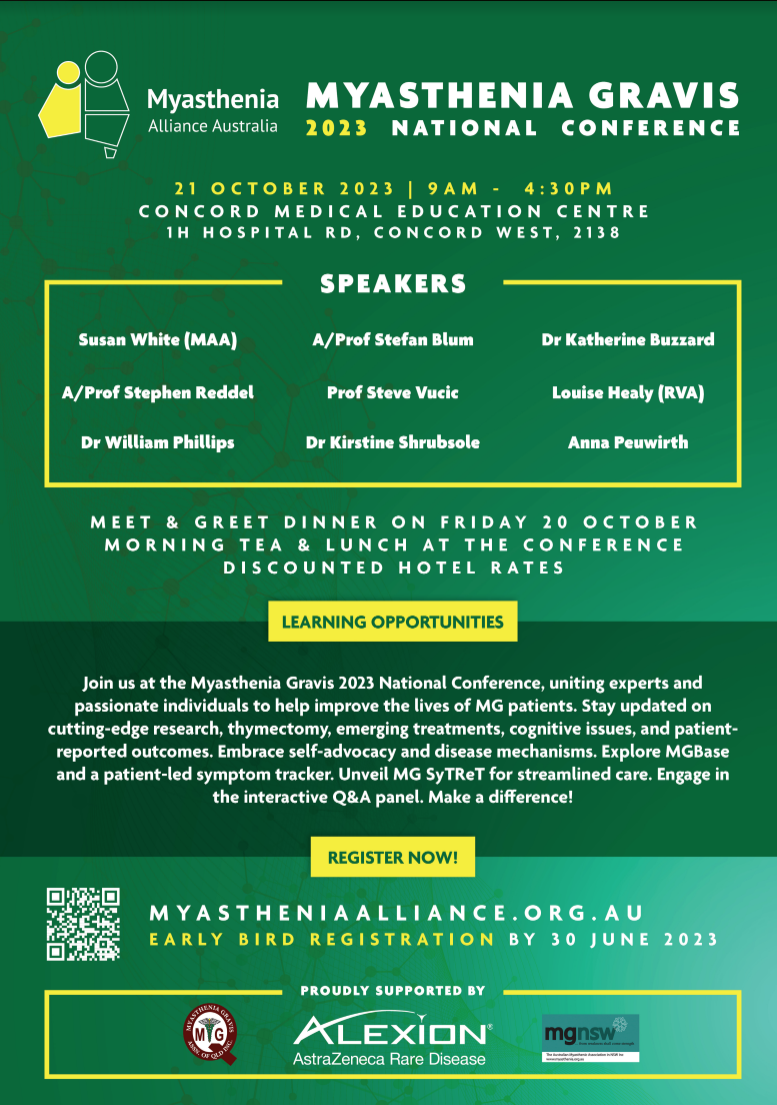
Registrations are now open for the 2023 Myasthenia Gravis Conference, to be held at the Concord Hospital Education Centre, Sydney on Saturday October 21 2023 – 9.00am to 4.30pm
The Registration Pack (which includes the Registration Form) can be downloaded from MAA Conference 2023 – Registration Pack
or just the Registration Form can be downloaded from MAA-Conference-Registration-Form-v1.0
Please complete the registration form and send it, along with your contribution of $185.00 per
person, by 21 August to either treasurer@mgaq.org.au or Denise Hannay, 9/24 Kendalls Road, Avoca
4670.
We are delighted to also offer EARLY BIRD REGISTRATION of $170.00 due by 30 June 2023.
• Any cheques should be made out to The Myasthenia Gravis Association of Qld Inc.
• Bank details for direct deposits are BSB 124032 and account number 10263772 and reference to
include wording ‘conf’ and your full name. Please inform us by email at treasurer@mgaq.org.au if
you have paid your registration by direct deposit so this information can be cross-checked.
• PayPal is available via Freecall number 1800 802 568.
Your successful conference registration, along with any additional information, will be confirmed by
email or, if you do not have email, by mail.
Myasthenia Alliance Australia was formed to support the needs of Myasthenia sufferers from all states, particularly on issues and items of national importance.

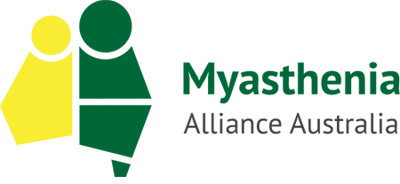




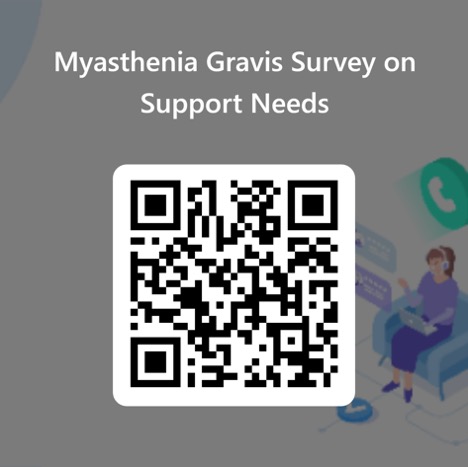
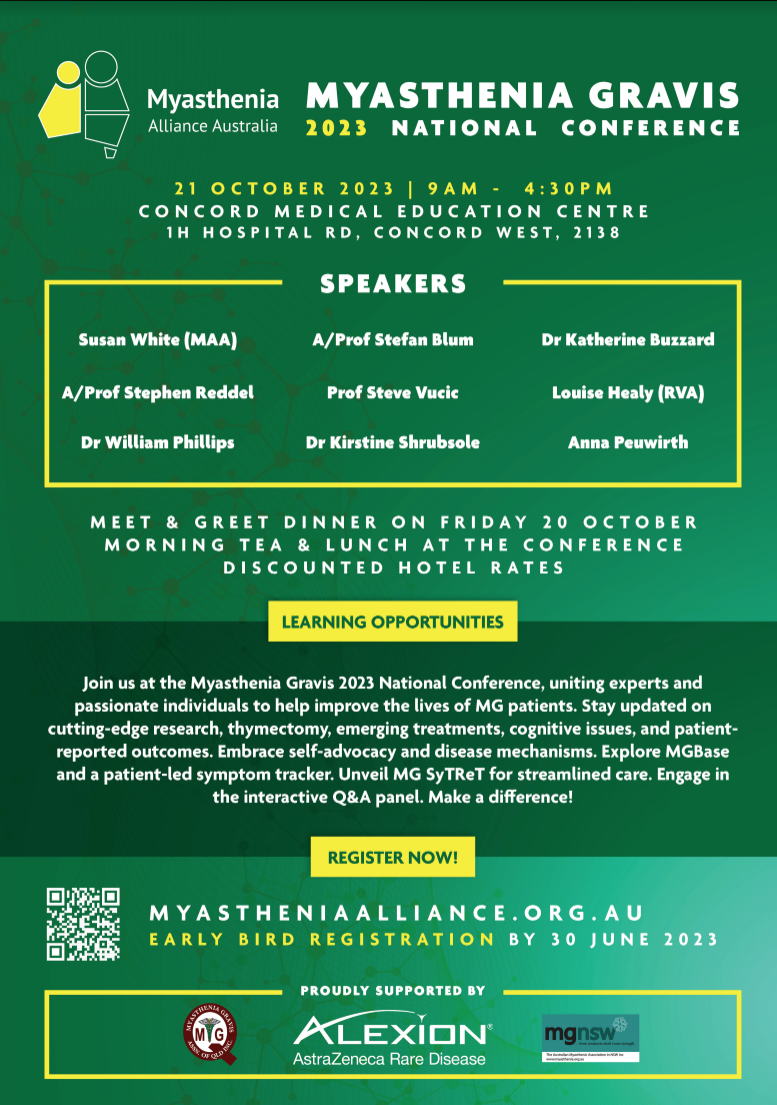

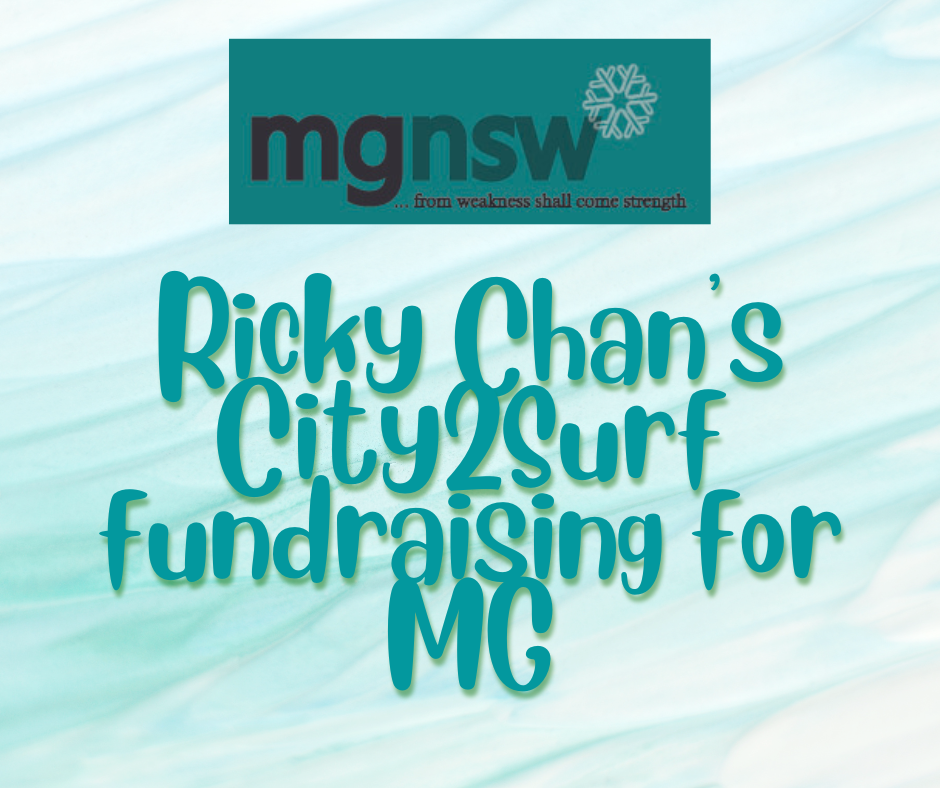

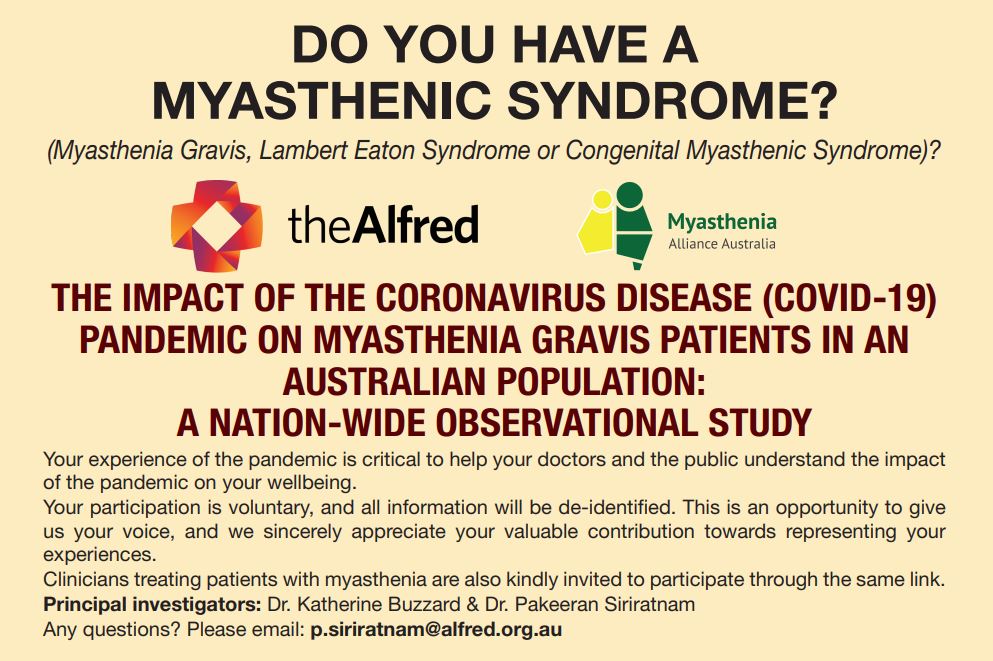 Do you have a myasthenic syndrome?
Do you have a myasthenic syndrome?